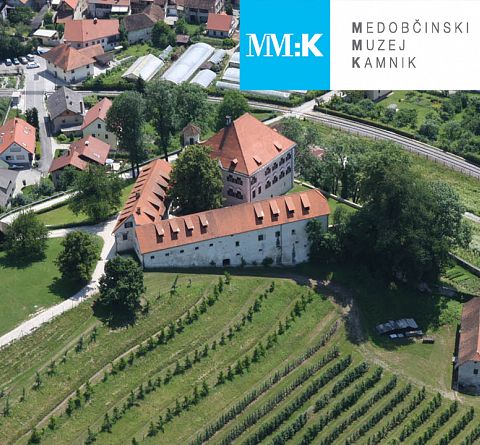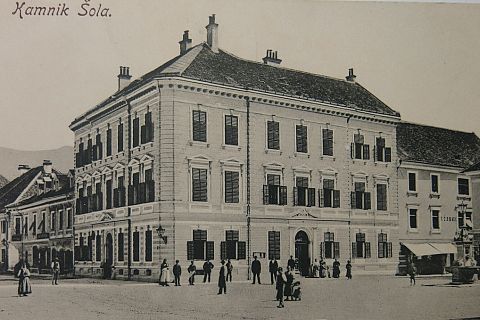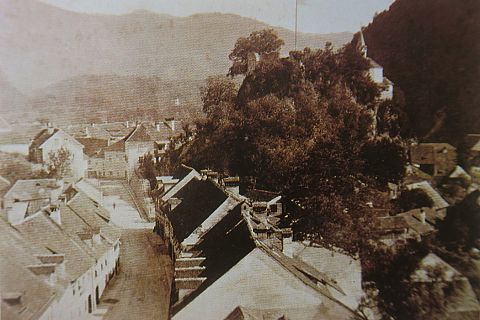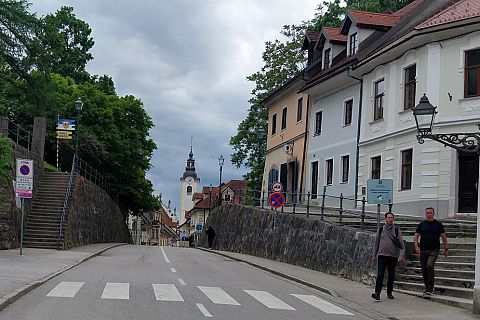Mayor Maks Samec and the Samec Tunnel
Many residents of Kamnik are familiar with the so-called Samec Tunnel, but few know when and why it was built, or who was behind this important intervention in the urban space. Its initiator was physician and mayor Dr. Maks Samec (1844–1889). His life and work were thoroughly presented by his great-granddaughter, Tatjana M. Peterlin Neumaier, in the 2024 edition of the Kamniški zbornik.
Samec was born into a farming family in Arclin near Vojnik. After studying medicine, he spent most of his life in Kamnik. Between 1871 and 1873, he worked there for the first time as a physician, and from 1877 he ran a private practice in a house on Šutna 6/7. It was also in Kamnik that he met his wife, Terezija Rode.
He became a prominent figure in political, economic, and social life. From 1880 until his resignation in 1886, he served as mayor of Kamnik. Between 1883 and 1889, he was elected as a representative in the Carniolan Provincial Assembly, and from 1877 to 1887 he also led the Civic Corporation and was president or member of numerous local societies, including the Narodna čitalnica (National Reading Room), a choir, the fire brigade, and others.
Among the most important achievements of his mayoral tenure were the construction of a new town hall with a school on the Main Square (today’s post office) and the excavation of the infamous slope beneath Mali grad (Small Castle), which posed a major obstacle for horse-drawn wagons. Farms at Graben and the beginning of Šutna used to provide additional horses to help pull heavy carts up the steep incline, which was as high as the retaining wall that stands there today.
Opposite the former burned-down town hall, the town of Kamnik and the Civic Corporation built a new building on the Main Square (now the post office) based on designs by architect Zupančič. It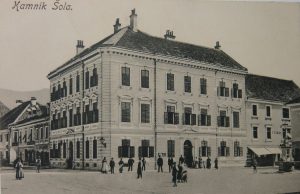 housed offices for the Civic Corporation and the municipal government, a ceremonial hall, and classrooms for both boys’ and girls’ schools on the upper floors. The school was officially opened on October 5, 1882. Until then, local children had been taught by Franciscan monks; with the new building, secular teachers took over the schooling.
housed offices for the Civic Corporation and the municipal government, a ceremonial hall, and classrooms for both boys’ and girls’ schools on the upper floors. The school was officially opened on October 5, 1882. Until then, local children had been taught by Franciscan monks; with the new building, secular teachers took over the schooling.
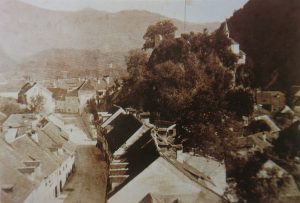 In order to excavate the slope—today known as the Samec Tunnel—Samec had to overcome many obstacles. One can imagine that his idea to lower the incline was quite revolutionary for the rather conservative townspeople, as it symbolically erased the boundary between the old town and the Šutna suburb. He also had to persuade the municipal council and the four homeowners whose houses stood on the slope to agree to demolition. The project was only finalized at the end of 1881, and by July 1882, the slope had been dug through and the houses removed.
In order to excavate the slope—today known as the Samec Tunnel—Samec had to overcome many obstacles. One can imagine that his idea to lower the incline was quite revolutionary for the rather conservative townspeople, as it symbolically erased the boundary between the old town and the Šutna suburb. He also had to persuade the municipal council and the four homeowners whose houses stood on the slope to agree to demolition. The project was only finalized at the end of 1881, and by July 1882, the slope had been dug through and the houses removed.
He managed to obtain permission to build the retaining wall from untreated stone taken from a nearby quarry (later known as the Resnik Quarry near Pod Skalo), which significantly reduced costs. The excavation and wall were completed by the end of 1882, although road and drainage improvements continued into the spring of 1883.
Samec’s projects met with considerable resistance—many citizens saw only municipal debt and higher taxes. But their grumbling didn’t bother Samec much. He reportedly said, “If you won’t be grateful to me, at least the livestock will be.”
 During the excavation, workers discovered an underground passage that connected Mali grad to the area of today’s Žale. According to Ivan Zika, it’s unclear whether the tunnel dates back to the time of the Andechs dynasty or to the more recent early modern period, possibly from the time of the Turkish invasions or the Protestant Reformation. Three stone blocks, now embedded vertically in the retaining wall and visible on the left side when walking from Šutna toward the town, still mark the location of the tunnel. Look for them—they serve as a reminder of the mayor who opened the way forward for the town.
During the excavation, workers discovered an underground passage that connected Mali grad to the area of today’s Žale. According to Ivan Zika, it’s unclear whether the tunnel dates back to the time of the Andechs dynasty or to the more recent early modern period, possibly from the time of the Turkish invasions or the Protestant Reformation. Three stone blocks, now embedded vertically in the retaining wall and visible on the left side when walking from Šutna toward the town, still mark the location of the tunnel. Look for them—they serve as a reminder of the mayor who opened the way forward for the town.



